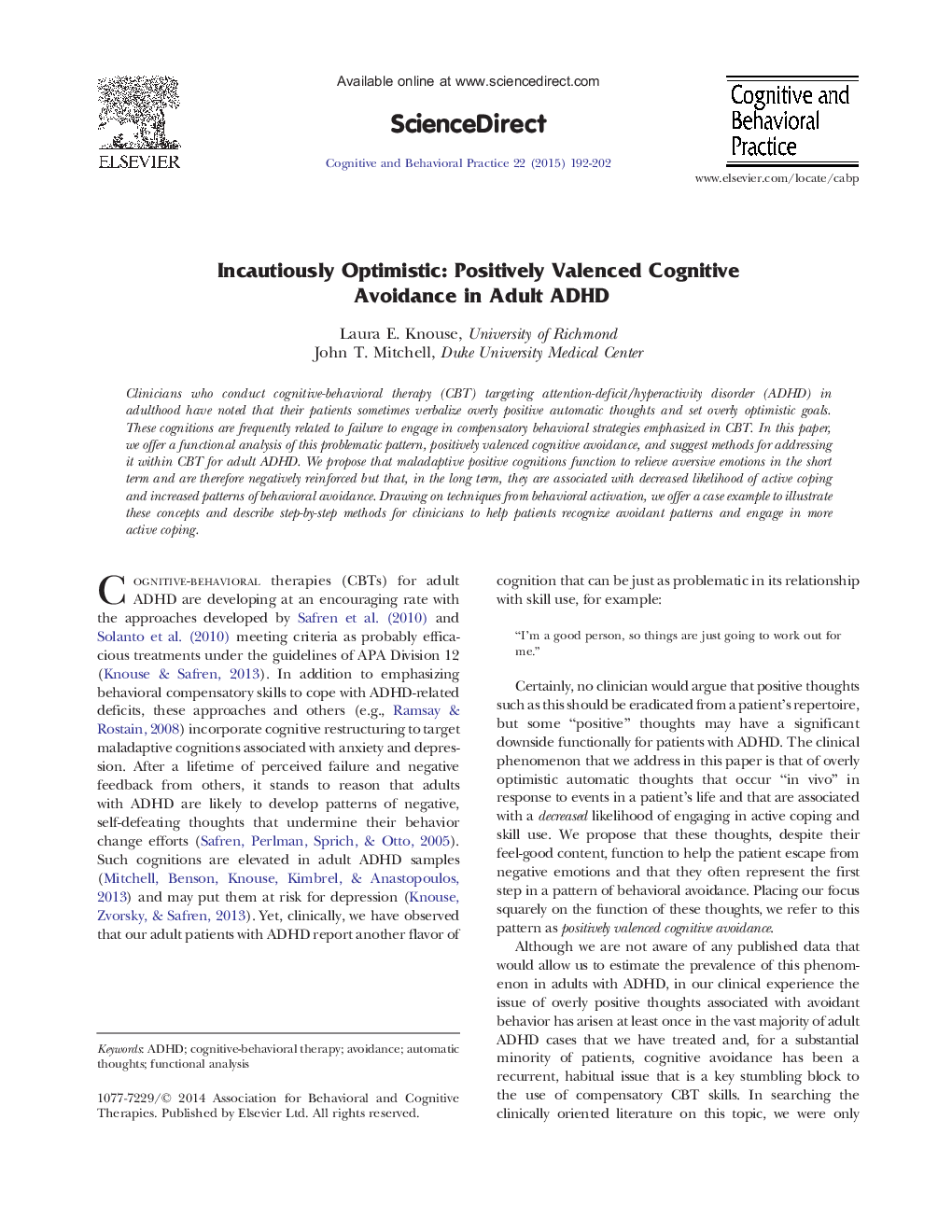| Article ID | Journal | Published Year | Pages | File Type |
|---|---|---|---|---|
| 904248 | Cognitive and Behavioral Practice | 2015 | 11 Pages |
•Describes the clinical phenomenon of maladaptive positive automatic thoughts in adult ADHD•Offers a functional analysis of positively valenced cognitive avoidance•Describes a step-by-step method for addressing positively valenced cognitive avoidance in CBT•Provides case examples to illustrate concepts and techniques for use with positively valenced cognitive avoidance
Clinicians who conduct cognitive-behavioral therapy (CBT) targeting attention-deficit/hyperactivity disorder (ADHD) in adulthood have noted that their patients sometimes verbalize overly positive automatic thoughts and set overly optimistic goals. These cognitions are frequently related to failure to engage in compensatory behavioral strategies emphasized in CBT. In this paper, we offer a functional analysis of this problematic pattern, positively valenced cognitive avoidance, and suggest methods for addressing it within CBT for adult ADHD. We propose that maladaptive positive cognitions function to relieve aversive emotions in the short term and are therefore negatively reinforced but that, in the long term, they are associated with decreased likelihood of active coping and increased patterns of behavioral avoidance. Drawing on techniques from behavioral activation, we offer a case example to illustrate these concepts and describe step-by-step methods for clinicians to help patients recognize avoidant patterns and engage in more active coping.
